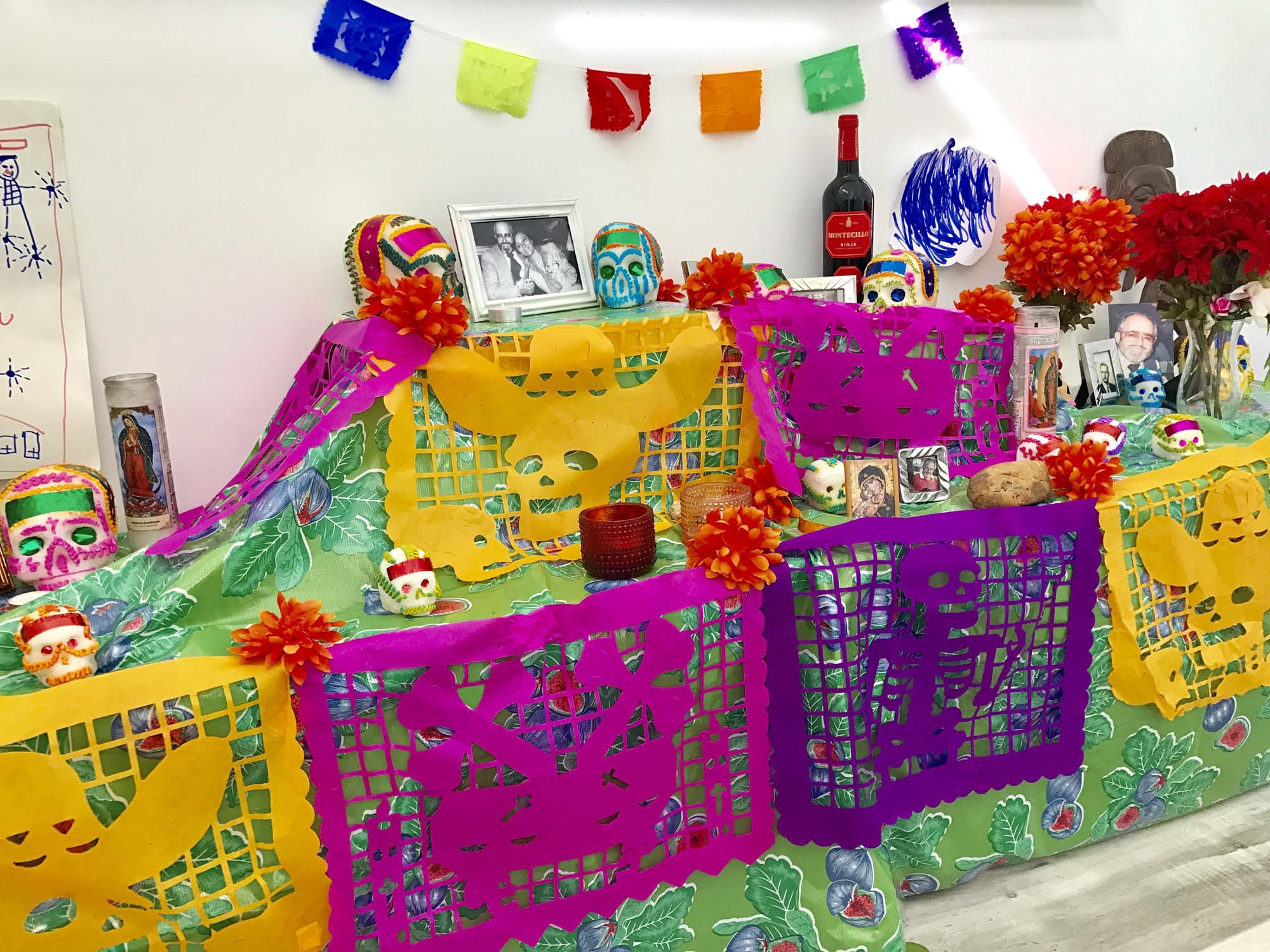

It’s kind of a trend right now: James Bond shed a light on the beauty of this tradition a couple of years ago, and ever since, Halloween has been plagued by different interpretations of ‘La Catrina’ (think of her as the Jedi of skulls), mixed with Frida’s hairdo, or flower hairpieces of every kind. Yet, most people don’t understand what this tradition is about. Below, a brief explanation:
Day of the Dead is celebrated mostly in Central and Southern Mexico on November 1 & 2. Even though this coincides with the Catholic holiday called All Soul’s & All Saint’s Day, the indigenous people have combined this with their own ancient beliefs of honoring their deceased loved ones.
The main belief is that the gates of heaven open at midnight on October 31, and the spirits of all deceased children are allowed to reunite with their families for 24 hours. On November 2, the spirits of the adults come down to enjoy the festivities that are prepared for them.In most Indian villages, beautiful altars (ofrendas), are made in each home.
Day of the Dead is a very expensive holiday for rural based, indigenous families. Many spend over two month’s income to honor their dead relatives. They believe that happy spirits will provide protection, good luck and wisdom to their families. Ofrenda building keeps the family close.
On the afternoon of November 2nd, the festivities are taken to the cemetery. People clean tombs, play cards, listen to the village band and reminisce about their loved ones. Tradition keeps the village close.

The four key elements represented on the altar
Fire/
Lighting of candles.
Earth/
Fruits and Cempazuchitl flower. The petals of this flower are used to ‘lighten’ the way to the altar because this flower is said to save the light of the sun.
Water/
Glass of water also present to calm the thirst of the spirits
Wind/
China paper that moves with the wind when the departed arrive. The tecnique to do the designs is very special.
Other basic elements
Copal/
Shows the way to soul of the departed and helps them remain in this world for a bit.
Sugar skulls/
They are a response to the mix between pre-hispanic cultures with the Spanish culture after The Conquest. The technique remind us that death is sweet and that nothing lasts. Each skull has the name of the spirit it represents.
Food and beverage/
Based on the likes of those who are being honored. Bread of the death is always present, and so is a plate with salt.
Xoloitzcuintle sculpture/
It represents Xotol. This hairless dog was considered a deity, and is supposed to help the souls in their journey back to the infra-world.
Pictures/
They serve as visual representations of those who died.
Levels
The number of levels in the altar represent different ancestral cosmovisions.
Two level altar/
It represents the division between earth and sky.
Three levels/
Heaven, earth and the infra-world. With the introduction of catholicism the symbolism is related to the Holy Trinity.
Seven levels/
It’s the most conventional. It represents the seven levels that the soul needs to go through to reach eternal rest. The Aztecs believed in seven kinds of death, and for the Otomi culture there were seven original sins.

© Journey of a Braid. All rights reserved. Privacy Policy | Terms of Use